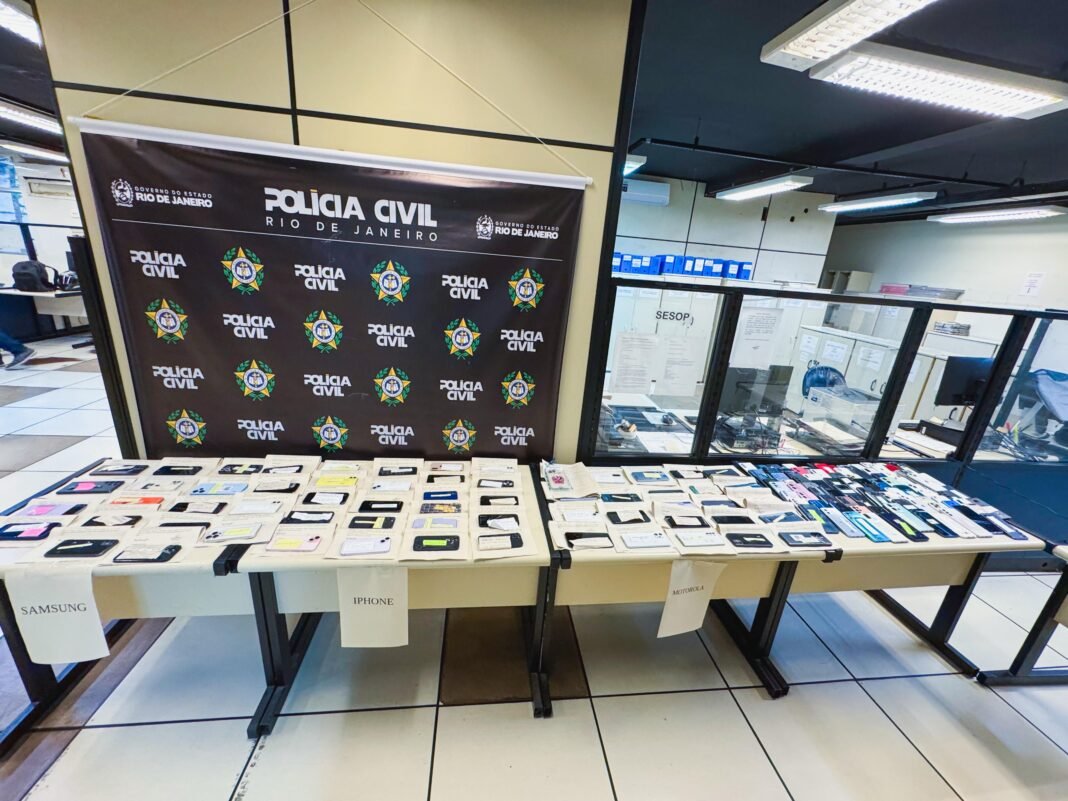In January 2025, 2,088 cases of cell phone robbery were reported in the state of Rio de Janeiro, marking a 39% increase compared to the same period in 2024, according to data from the Public Security Institute (ISP). The total number of device thefts reached 3,620, the highest level recorded since the historical series began in 2003, reflecting a 15% rise from January 2024. When combining thefts and robberies, 5,708 cases were reported in just one month—an average of one report every eight minutes.
This Content Is Only For Subscribers
To unlock this content, subscribe to INTERLIRA Reports.
Areas with the Most Cases
The following police districts recorded the highest numbers of cell phone robberies and thefts in January 2025, according to ISP:
- 5th DP (Mem de Sá) – 395 cases
- 9th DP (Catete) – 308 cases
- 12th DP (Copacabana) – 278 cases
- 1st DP (Praça Mauá) – 180 cases
- 10th DP (Botafogo) – 172 cases
- 4th DP (Presidente Vargas) – 152 cases
- 14th DP (Leblon) – 147 cases
- 16th DP (Barra da Tijuca) – 144 cases
- 126th DP (Cabo Frio) – 138 cases
- 33rd DP (Realengo) – 121 cases
2024 Data
Throughout 2024, police stations across Rio de Janeiro registered 21,423 robberies and 37,397 thefts of cell phones. The area with the highest total cases was 5th DP (Mem de Sá), in downtown Rio, with 3,480 reports. It was followed by the 18th DP (Praça da Bandeira), with 2,993 cases, and the 16th DP (Barra da Tijuca), with 2,749 cases reported last year.
Cell Phone Unlocking Center
In December 2024, a police operation in Morro do Fallet-Fogueteiro, located in the Santa Teresa neighborhood, uncovered a clandestine cell phone unlocking center. Authorities seized 200 stolen devices hidden inside a secret room behind a bar. The facility was used to unlock and resell stolen phones, further fueling the cycle of mobile device theft in the city.
Analysis:
The sharp rise in cell phone thefts and robberies in Rio de Janeiro highlights the growing role of organized crime in these offenses. The high concentration of cases in specific police districts, particularly in central and tourist-heavy areas like Mem de Sá, Copacabana, and Catete, suggests that criminals are targeting locations with a high density of pedestrians and visitors, where victims are more vulnerable. The record-breaking numbers in January 2025 indicate that current enforcement efforts are insufficient to curb this trend, which is increasingly becoming a public security crisis.
The discovery of a clandestine cell phone unlocking center in Morro do Fallet-Fogueteiro further confirms that these crimes are not isolated acts but part of a structured criminal economy. Stolen devices are quickly resold after being unlocked, fueling a black market that sustains street-level crime. These operations often have direct links to larger criminal organizations, which use profits from phone thefts to finance drug trafficking and arms purchases. Without a disruption of this economic chain, merely increasing policing in affected areas will have a limited impact.
Sources: O Globo.




